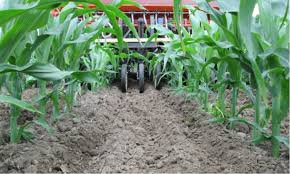ILSOYADVISOR POST
Interseeding Covers
There are vast differences in the crop growing season from Northern to Southern Illinois. These differences can cause challenges in the establishment and growth of a cover crop. In Northern Illinois, spring weather conditions warm up later and harvest tends to be later in the fall past the appropriate time for seeding cover crops and an earlier killing frost typically occurs. In Southern Illinois, spring conditions arrive much earlier and harvest is earlier and there are more days ahead of a killing fall frost.
Alternative methods of cover crop establishment are being explored throughout the state and across the Corn Belt to test their success in providing good growth after the harvest season. Some of those techniques include interseeding, aerial seeding, or planting earlier maturity varieties that growers can harvest sooner.
Interseeding is one way to get the covers established earlier in the season. Earlier cover crop establishment allows you to take advantage of a longer fall growing season and keep a living root in the soil that ultimately leads to improved soil health.
Seed early: Interseeding covers early in the growing season when the corn is between V3 and V7 (4-6 weeks after planting) has potential in Northern Illinois. Herbicides with residuals that have a short half-life must be used to not affect the cover crop germination and growth. If covers are interseeded before the V3 stage they will compete with the crop and ultimately cause yield reductions. If they are seeded after the V7 stage they may not achieve enough growth to survive a hot and dry month of August and they are move difficult to plant
Seeding methods: A cover crops can be seeded with special equipment that allows the farmer to drill between the growing crop rows. Broadcast seeding can also be used but seeding rates and soil conditions need to be considered.
Cover crops to consider planting early: Before making your cover crop selection, you want to identify your goals for growing the cover crop and match it to the cover crop that will provide the greatest potential to reach those goals. Annual ryegrass, vetch, red clover, and crimson clover has seen success through interseeding. They could grow for a short period, go dormant, and begin growing again before harvest when there is sufficient sunlight and moisture.

Early cover crop interseeding into soybeans isn’t recommended due to the low probability for success and potential yield reductions. Soybeans completely shade over the row and can starve the cover for sunlight and air and too much early cover growth can compete with soybeans.

Late summer or early fall interseeding can be considered for both corn and soybean crops to meet your establishment goals.

Regardless of your geographic location, there are several seeding methods that can be used to establish cover crops





Comments
Add new comment